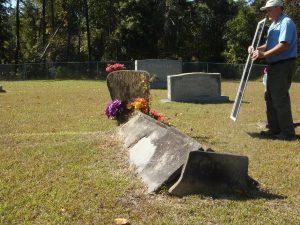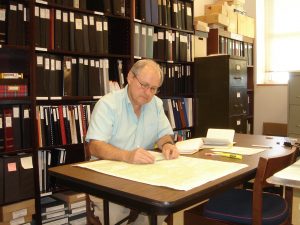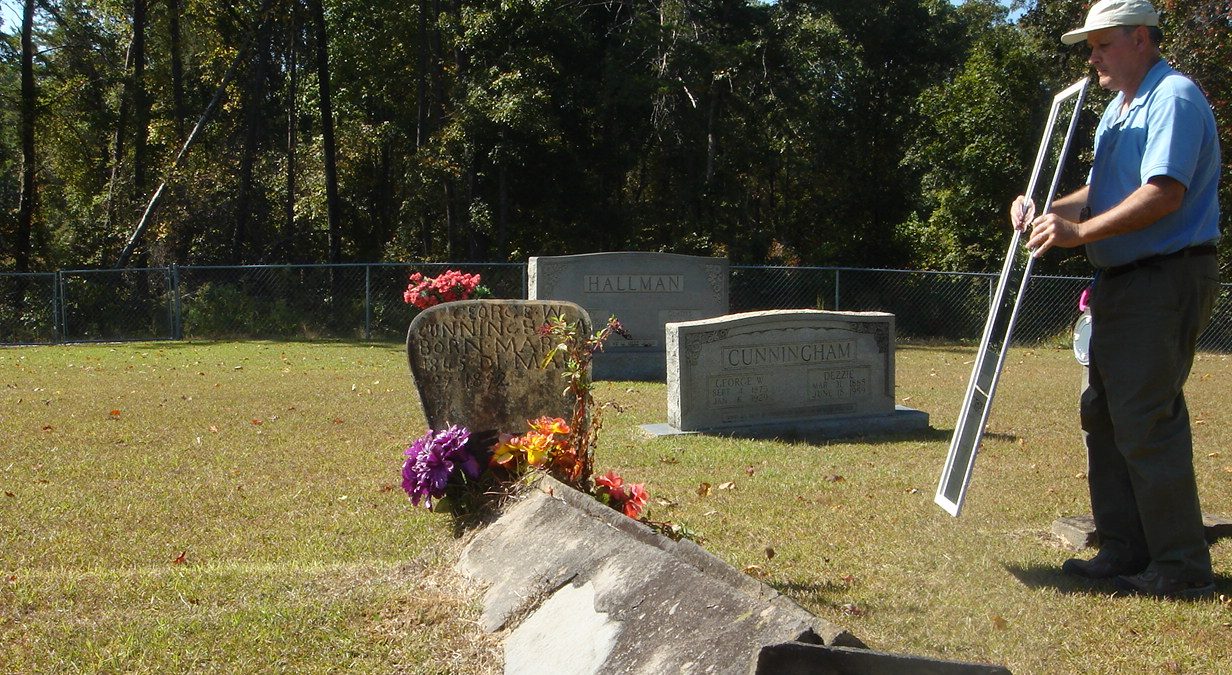
TUSCALOOSA, Ala. — There are a number of leisure activities a person may choose to undertake in their downtime. For Dr. Ian Brown, of The University of Alabama, these activities often include visiting gravesites throughout the United States and learning as much as he can about each one.
Brown, UA professor and chair of the department of anthropology, recently wrote a book titled “Marking Graves in Tuscaloosa County, Alabama: The Musings of a Professor,” in which he shares some of that knowledge as it pertains to cemeteries in the county.
The book came together as a series of essays that Brown wrote as president of the Association for Gravestone Studies, or AGS, which is an international organization of people interested in markers and memorials for graves throughout the world.
Brown’s fascination with gravesites goes back to when he fell asleep in a cemetery in Lancaster, England, at age 7. He wondered about who all the people in the graves were.
“That’s how I got interested in cemeteries, and that’s how I got interested in archaeology,” said Brown. “I was up there looking for Roman coins and I found graves instead – they were just as interesting.”
Brown’s early work was focused on New England and colonial gravestones. After moving to Tuscaloosa, he decided he wanted to learn about them and see as many as he could.
Keith Jacobi, a colleague of Brown’s, had similar interests so they decided to teach a course in the Blount Scholars Program. Originally, the course was concerned with mortuaries and cemeteries throughout the world. It eventually morphed into a fieldwork project in which Brown would take students out in the field in an attempt to visit all the cemeteries in Tuscaloosa County, of which there are about 250.
Upon becoming president of the AGS, Brown decided to write a monthly article in the association’s electronic newsletter with notes from his experiences in cemeteries and ended up with almost 50 of them. He realized they were substantial enough that he could make them into a pictorial essay and maybe publish it somewhere down the line.

When Brown discovered that the AGS was going to have its annual conference in Tuscaloosa in June, he decided to pull together the essays he wrote dealing with cemeteries in the area in order to serve as an introduction to the graves, graveyards and markers of the county.
At that point, the book was compiled in a month’s time because Brown already had the essays at hand. With the help of his wife’s publishing company, Borgo, and a foreword written by Dr. Guy Hubbs, the book was released in August.
Brown has kept a daily journal for over 40 years and whenever he travels, he almost always takes the back roads. He prefers to stay at bed and breakfasts and take a slower route to his destinations, giving him time to enjoy his lunch and walk around the cemeteries.
“I’ve managed to kind of tie all my interests together, and so my travels have been really interesting,” said Brown. “You see how peaceful it is, and you see a part of Americana that you would not see on the highways.”
One of the distinctive characteristics of southern cemeteries that Brown points to is the visible difference between black and white cemeteries. White carvers and people that worked with cement usually operated in a certain area, while those in the black communities usually did so on a part-time basis for their neighbors and community. The use of artifacts and the art that relays their culture and tradition vary greatly.
There are also distinctions between the materials used in different areas in Tuscaloosa County in the 19th and early 20th centuries. North of the Black Warrior River and up into the Northport area, carvers primarily used sandstone. South of the river, concrete was the primary resource that was used by folk carvers.
Over 75 students have taken Brown’s course over the years. It teaches students the scientific method with humanistic values by encouraging students to develop hypotheses and gather data to develop their hypotheses. Through material culture studies, classes help students identify issues and similarities that otherwise may not have been noticed.
“Just once, I wish I could come out of a cemetery and not have a project,” said Brown, jokingly. “This is the thing: There’s so much in any one cemetery to study, that you can’t possibly do everything.”
As president of AGS, Brown oversaw the establishment of local chapters throughout the country. Members of the Alabama chapter gather at least twice a year and visit cemeteries, mainly for the friendships and bonds that are created. Their upcoming meeting in Florence in November will see around 20 members spending a day together, wandering through cemeteries and talking about them on what they hope will be a beautiful day in the fall.
Brown is now in the process of creating his next book, which will deal with burials and cemeteries throughout the eastern U.S. Brown says the book is about three-quarters complete and will include information on Native American gravesites, as well.
Contact
Derek Hooper, student writer, media relations, 205/348-5320; Chris Bryant, UA media relations, cbryant@ur.ua.edu
Source
Dr. Ian Brown, ibrown@ua.edu
